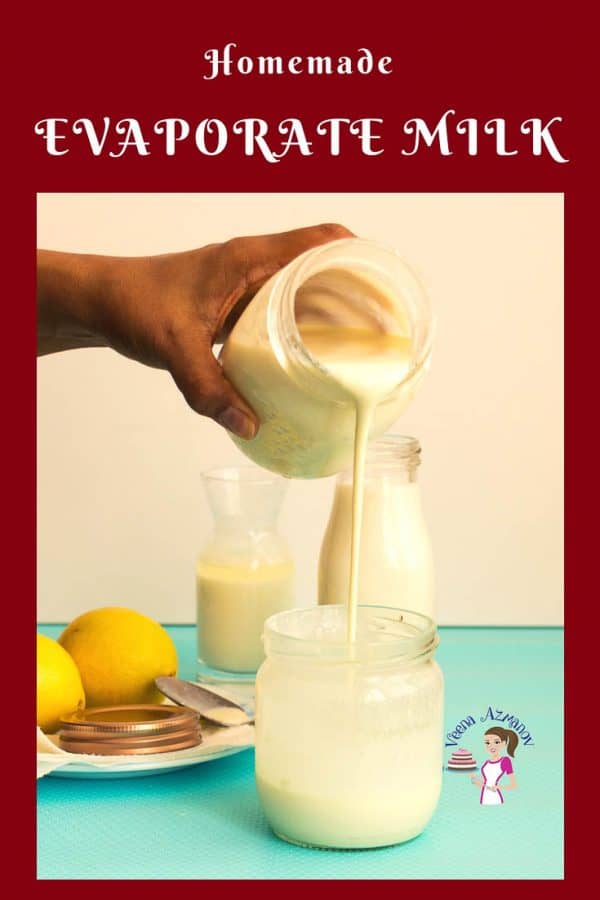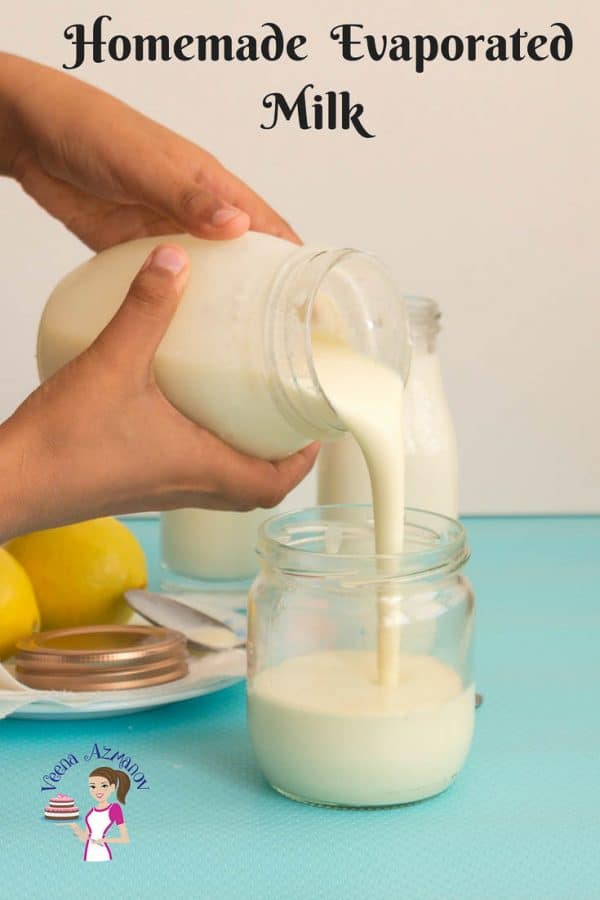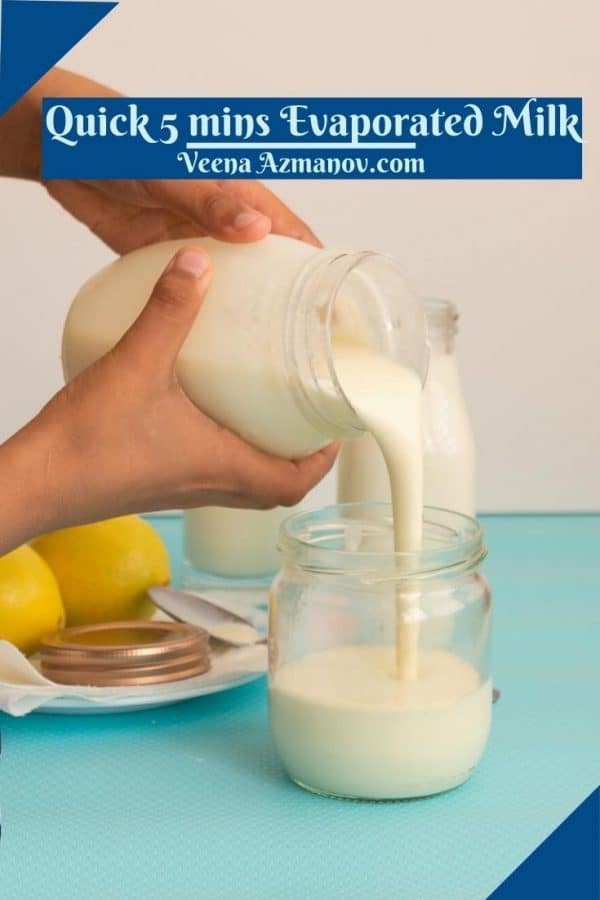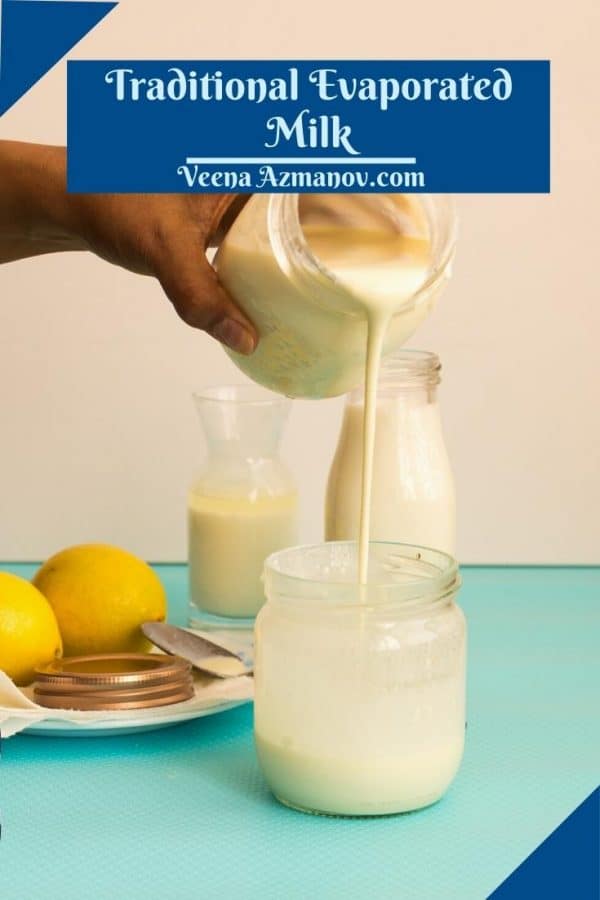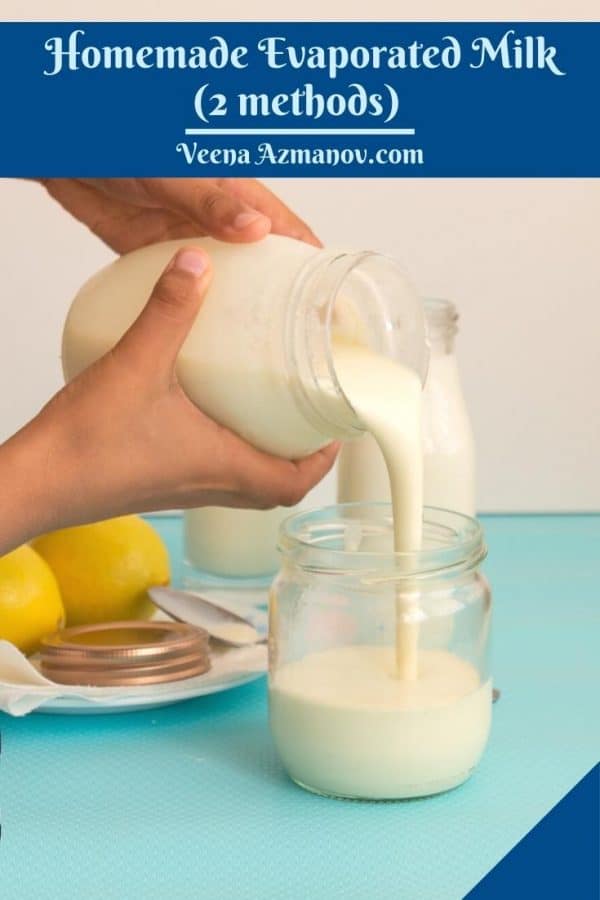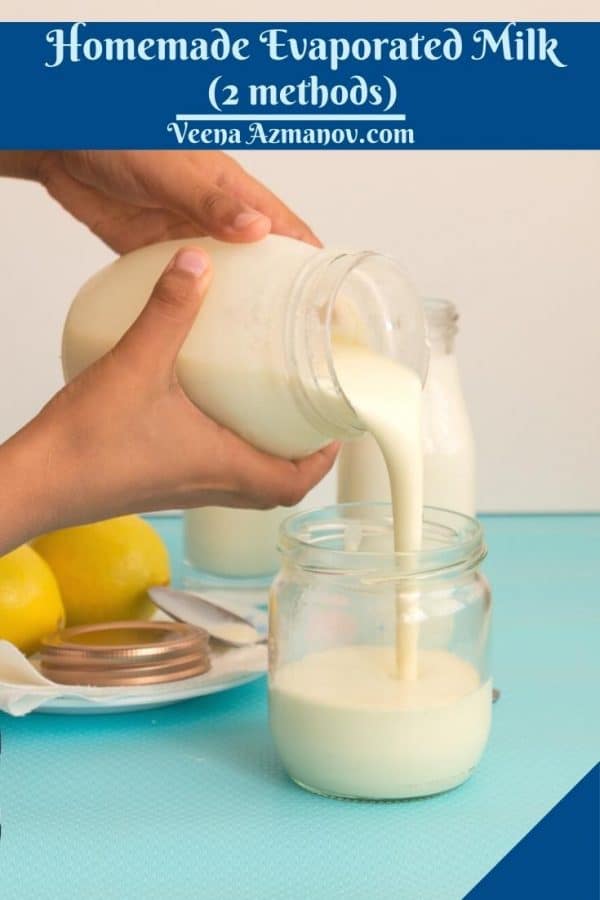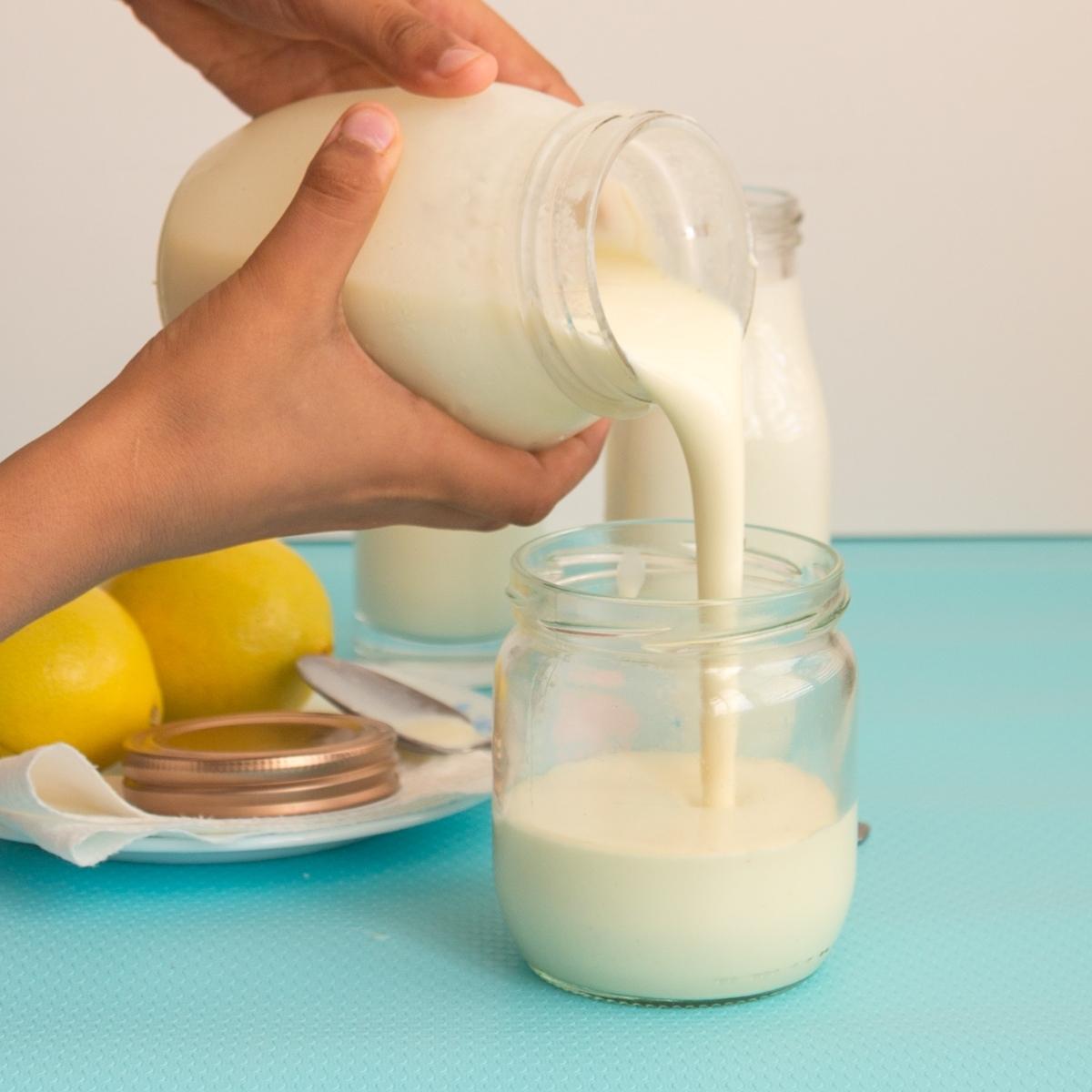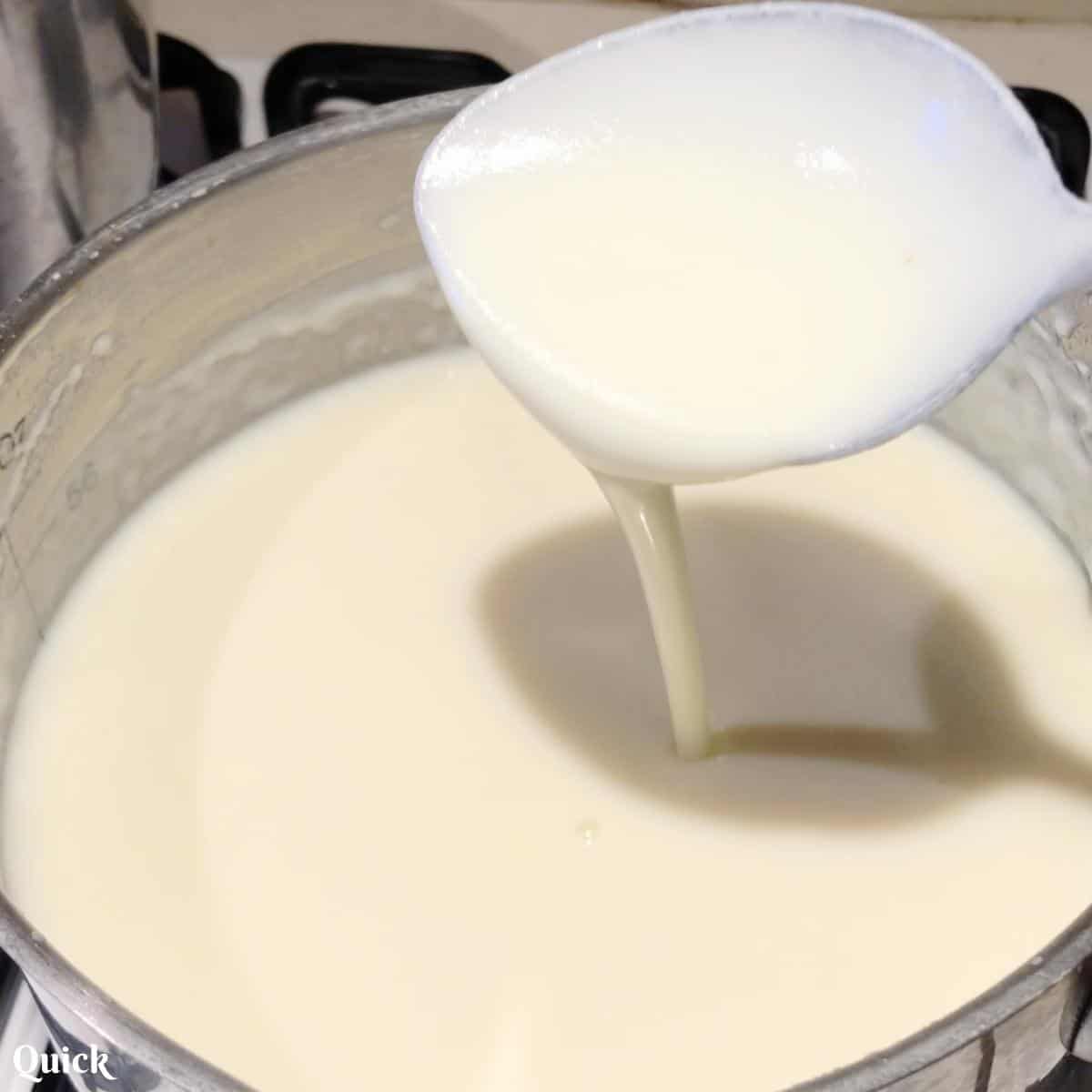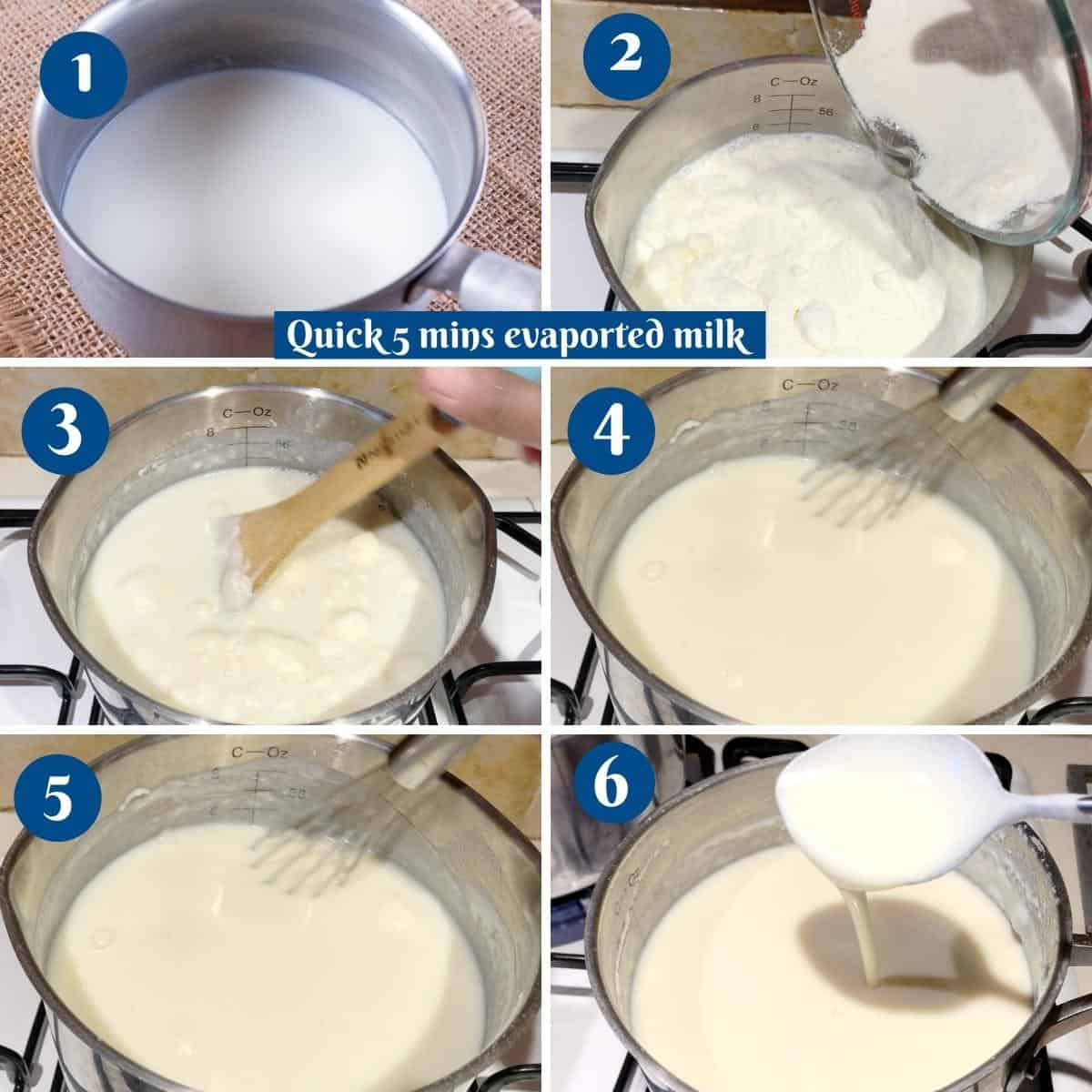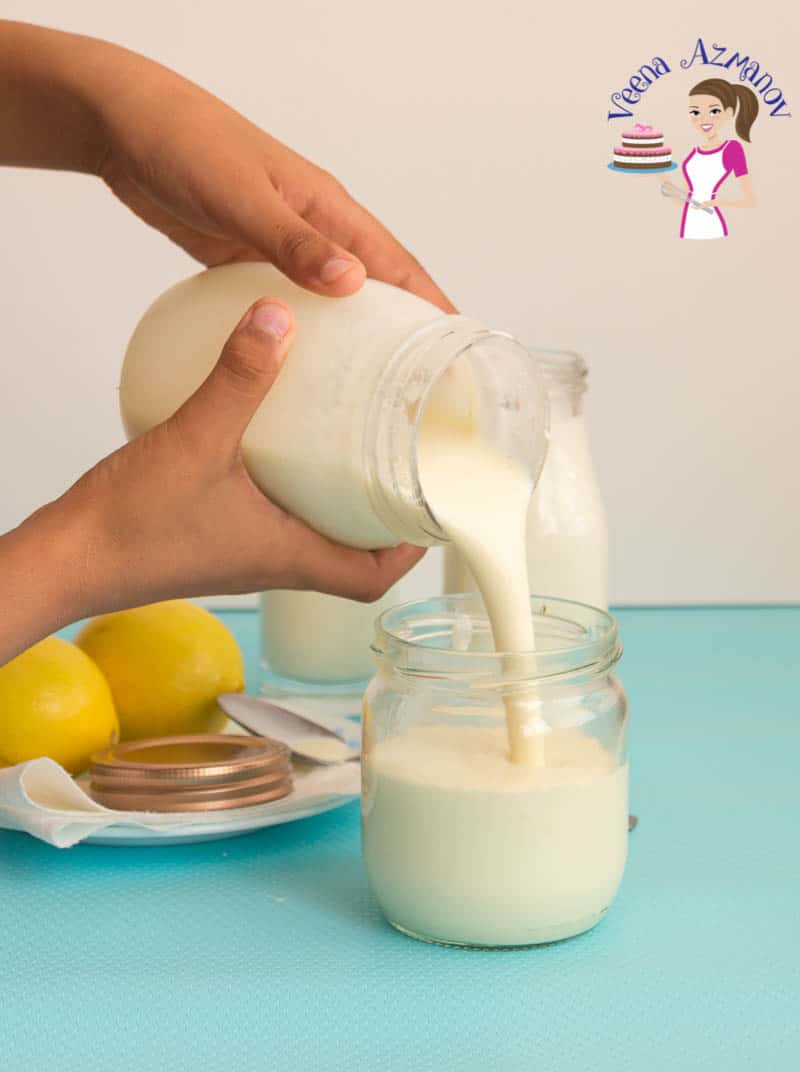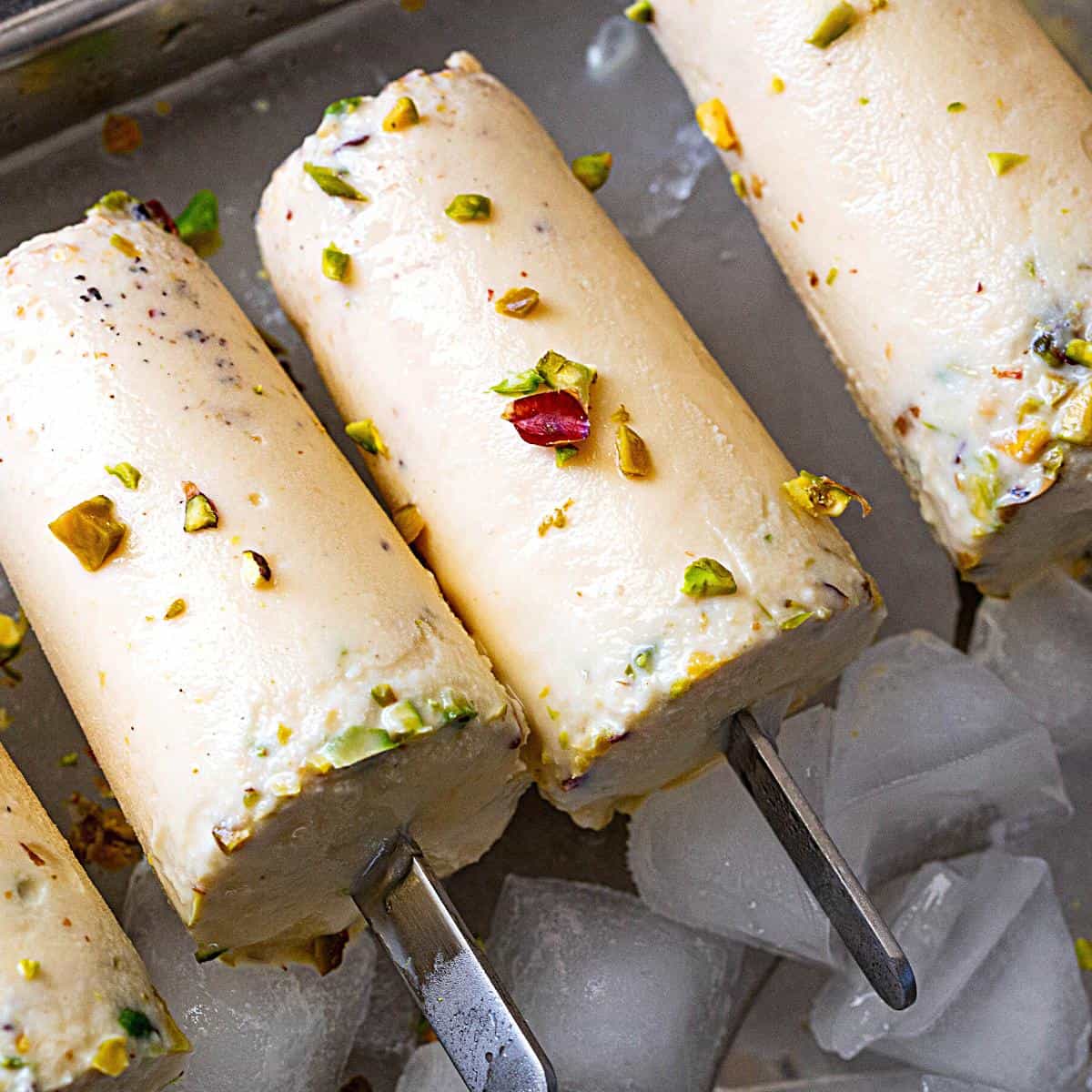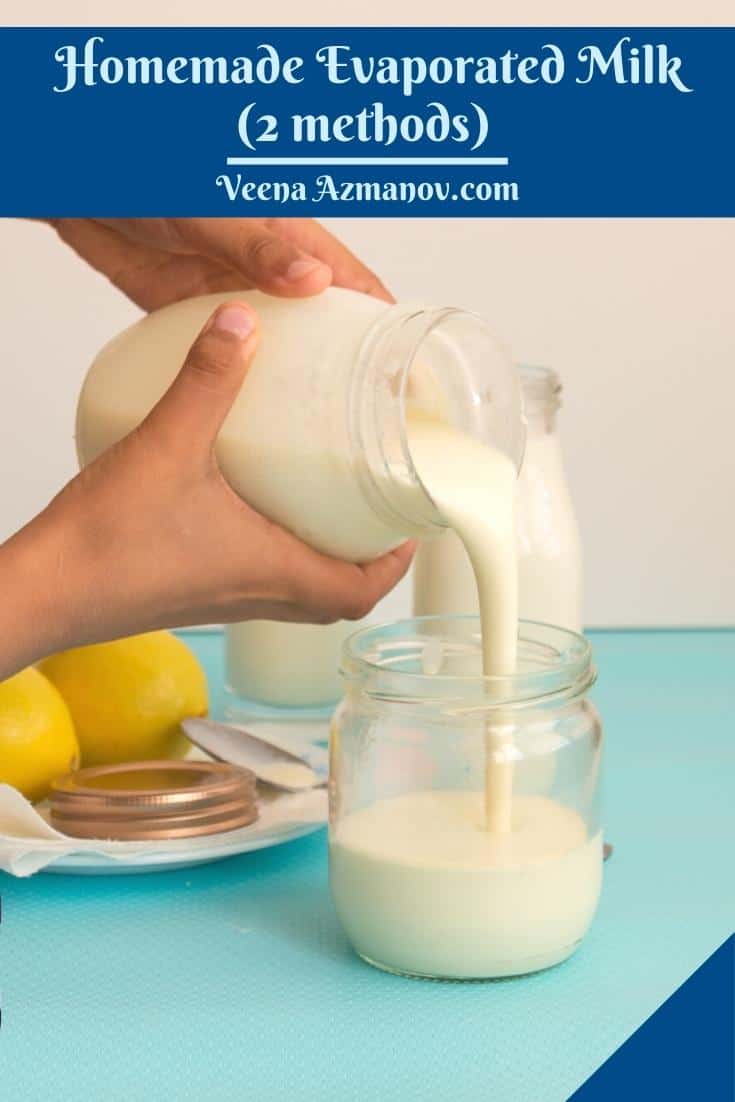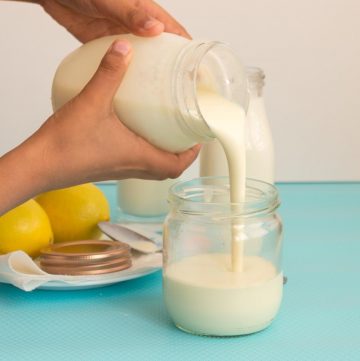How to Make evaporated milk (traditional)
Pour the whole milk into a heavy-bottomed saucepan or pot. Heat the milk over medium-low heat, stirring occasionally to prevent scorching, until it reaches a gentle simmer. Reduce the heat to low to maintain a simmer, and continue simmering the milk uncovered for about 1.5 to 2 hours. Stir occasionally to prevent a skin from forming on the surface.Pro tip – It is essential to keep the heat low and stir frequently. Otherwise, the milk will burn on the bottom giving the milk a burnt smell. Allow the milk to simmer until it reduces by about half, or until it reaches your desired thickness and consistency. It should have a creamy texture and a slightly caramelized color. Once the milk has reduced to your liking, remove it from the heat and let it cool to room temperature. Once cooled, transfer the milk to a clean, airtight container or canning jars. Store it in the refrigerator for up to 5-7 days.
Tips for Success (traditional)
Use Whole Milk: Whole milk will yield the creamiest and richest evaporated milk. Avoid low-fat or skim milk, as they won’t have the same texture and flavor. Low Heat and Patience: Simmer the milk over low heat to prevent it from boiling too rapidly, which can cause scorching. Patience is key; allow the milk to reduce slowly to achieve the desired consistency and flavor. Stir Occasionally: Stir the milk occasionally while it simmers to prevent a skin from forming on the surface and to ensure even reduction. Choose the Right Pan: Use a heavy-bottomed saucepan or pot to prevent the milk from scorching. A wide surface area will also help with evaporation. Don’t Cover the Pan: Ev. milk needs to reduce and thicken, so leave the pan uncovered while simmering to allow moisture to evaporate. Monitor Consistency: Keep an eye on the milk as it reduces. It should gradually thicken and develop a slightly caramelized color. Remove it from the heat when it reaches your desired consistency. Cool Completely: Allow the milk to cool completely before transferring it to a container and refrigerating it. This helps prevent condensation and moisture buildup in the container. Store Properly: Store homemade evaporated milk in a clean, airtight container in the refrigerator. It should be consumed within 5-7 days.
Quick 5 mins evaporated milk (video below)
This quick evaporated milk made from powdered milk will have a different texture or flavor than store-bought evaporated milk, but it can work well as a substitute in recipes that call for evaporated milk. Adjust the water and powdered milk quantity to achieve your desired thickness and flavor.
Milk – It’s best to use regular milk that’s at least 3% fat. Skim milk, reduced-fat milk, or low-fat milk has too much liquid, so it will take longer to evaporate and you won’t get thick milk. You can also use non dairy prodcuts like coconut milk, almond milk, soy milk or oats milk. Powdered milk – If you make the 5-minute version, you will need powdered milk. You do not want to use skimmed milk powder as it will not give you a thick consistency.
Combine the milk and powdered milk in a mixing bowl or measuring cup. Stir well until the powdered milk is completely dissolved. Transfer the mixture to a small saucepan or pot and place it over medium-low heat. Heat the mixture gently, stirring constantly, until it begins to simmer. Be careful not to let it boil. Once the mixture is simmering, reduce the heat to low to maintain a gentle simmer. Continue simmering and stirring occasionally for about 10-15 minutes, or until the mixture reduces and thickens slightly. Keep a close eye on the consistency; you want it to resemble the thickness of evaporated milk. Once the mixture has reached your desired consistency, remove it from the heat and let it cool slightly. Transfer the quick EM to a clean, airtight container or canning jar. Allow it to cool completely before storing it in the refrigerator. It can be used immediately or stored for later use.
Is evaporated milk similar to condensed milk?
Condensed milk and evaporated milk are both forms of concentrated milk, but they differ in terms of their sweetness, consistency, and usage:
Sweetness: Condensed milk is sweetened with sugar, which gives it a thick and syrupy consistency. Evaporated milk does not contain added sugar and has a slightly caramelized flavor due to the evaporation process. Production: During the production process, condensed milk has sugar added to it before undergoing evaporation. Evaporated milk is made by heating milk to remove about 60% of its water content, resulting in a concentrated milk product. Consistency: Condensed milk is much thicker and sweeter than evaporated milk due to the added sugar. Evaporated milk is thinner than condensed milk but still thicker than regular milk, with a creamy texture. Usage: Condensed milk is commonly used as a sweetener and flavor enhancer in desserts, candies, and baked goods. It’s also a key ingredient in popular desserts like dulce de leche and fudge. Evaporated milk is thinner than condensed milk but still thicker than regular milk, with a creamy texture.
In summary, condensed milk is sweetened and thickened, making it suitable for desserts and sweet recipes, while evaporated milk is unsweetened and used as a cooking ingredient in a variety of dishes.
Frequently asked questions
Thank you for sharing - Save for later
Baking: EM can be used in place of regular milk in baked goods such as cakes, cookies, muffins, and bread. It adds richness and moisture to baked goods, resulting in a tender texture and golden crust. Sauces and Soups: EM can create creamy sauces and soups, such as Alfredo sauce and cheese sauce, cream of mushroom soup, potato soup and creamy pasta sauces. It adds richness and body to the dish without making it overly heavy. Creamy Desserts: EM is a key ingredient in many creamy desserts, including custards, puddings, ice cream, kulfis, and semolina pudding. It adds a smooth texture and rich flavor to these desserts. Hot Beverages: EM can be used as a creamer in hot beverages such as coffee, tea, and hot chocolate. It adds creaminess and richness to the drink without watering it down. Casseroles and Gratin: EM can be used in savory dishes such as casseroles, gratins, and savory pies. It adds creaminess and richness to the dish while helping to bind the ingredients together. Marinades and Sauces: EM can be used as a base for marinades and sauces for meats and vegetables. It adds flavor and helps tenderize the meat, producing juicy and flavorful dishes. You can use it in curries to give them a creamy texture. It works particularly well in Thai and Indian curries. Homemade Ice Cream: EM can be used as a base for homemade ice cream, either by itself or combined with other ingredients such as sweetened condensed milk, sugar, and flavorings. It creates a smooth and creamy texture without an ice cream maker.
Overall, EM is a versatile ingredient that can be used in both sweet and savory recipes to add richness, creaminess, and flavor. It’s a handy pantry staple to have on hand for a wide range of cooking and baking applications.
